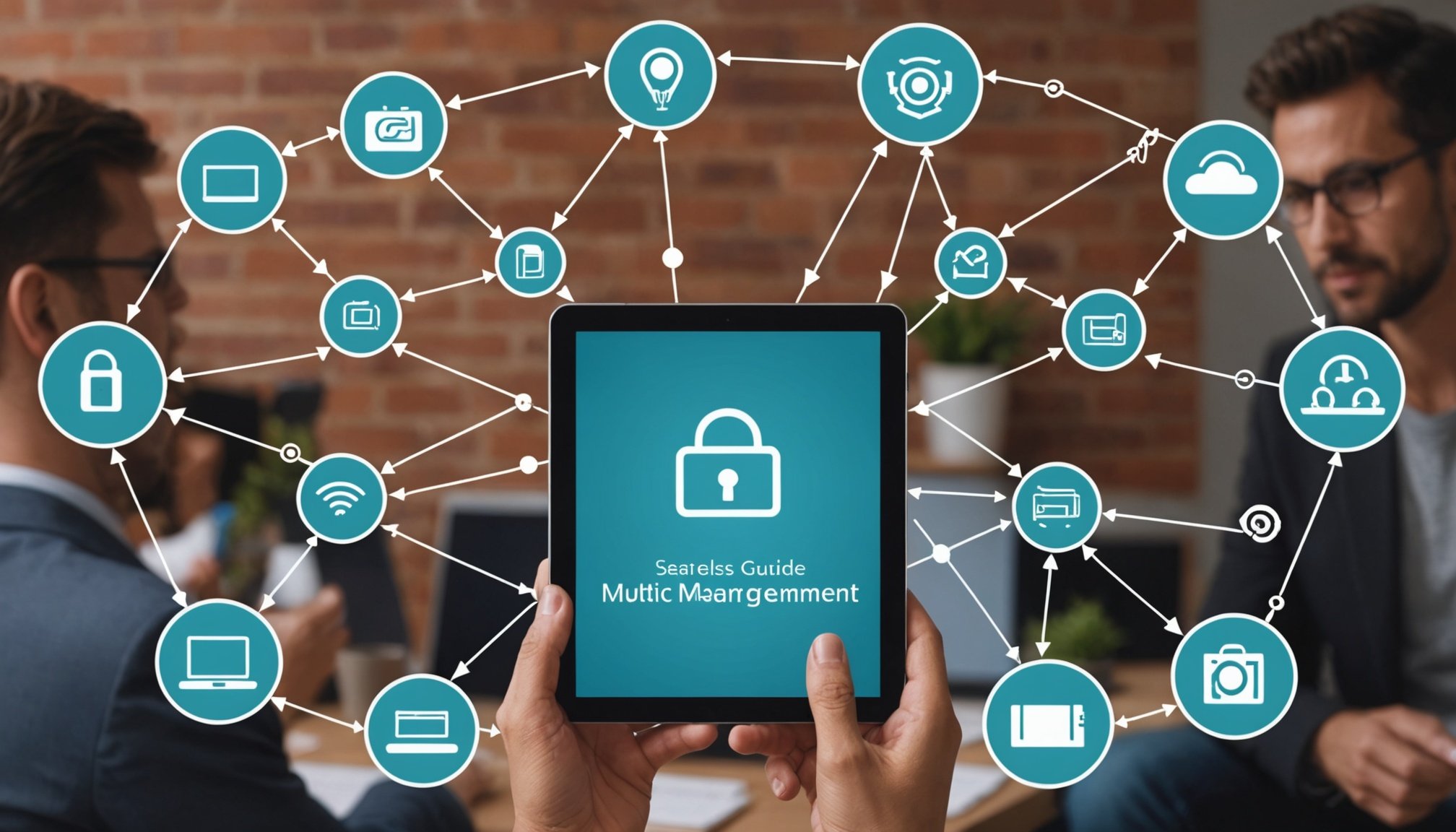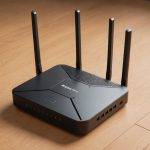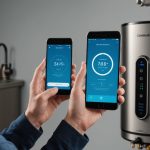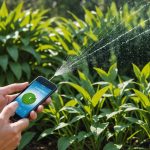Understanding Multi-Device Management
In today’s technology-driven world, where users often juggle multiple gadgets, multi-device management emerges as a critical function. This concept involves orchestrating an orderly and connected interaction between various devices like smartphones, tablets, and laptops. Its significance lies in the synchronized ecosystem control it fosters, allowing users to perform tasks seamlessly across their devices.
Seamless integration across different devices is undeniably beneficial. It facilitates an uninterrupted workflow, ensuring that a task initiated on one device—say a smartphone—can be effortlessly continued on another device like a laptop. This ability drastically enhances productivity and streamlines personal and professional daily tasks. Moreover, seamless connectivity bolsters data accessibility, enabling users to access their information from anywhere, transcending physical limitations.
The current trend reflects an increasing reliance on smartphones, not only as independent devices but also as hubs that control and command other gadgets within a user’s ecosystem. The rise of ecosystem connectivity showcases a shift toward an integrated, unified digital experience. Smartphones are progressively transforming into remote controls for a user’s device network, propelling multi-device management into mainstream consciousness. This evolution underscores the demand for robust management systems that can harness the multifaceted capabilities of our interconnected digital landscapes.
Essential Settings for Smartphone Ecosystem Control
Navigating through today’s smartphone settings can feel overwhelming, yet mastering them is key to an efficient device synchronization experience.
Also to read : Unlocking ultimate control: conveniently monitor your smart home water heater with your smartphone
Adjusting Connectivity and Sync Settings
To optimize your smartphone’s connectivity, it’s crucial to activate settings like Wi-Fi and Bluetooth for seamless integration with other devices. Enabling cloud services ensures that your data can be accessed and managed across various platforms, enhancing the fluidity of your ecosystem. Make sure to tweak app configurations to handle permissions for optimal control over what kinds of data each app can access. This meticulous attention to settings not only strengthens data privacy but also increases device efficiency.
Utilizing Built-in Features for Multi-Device Management
Leveraging built-in features such as the Universal Clipboard and Handoff can vastly improve connectivity on iOS devices, allowing you to effortlessly transition between gadgets. Similarly, Android users benefit from Google’s ecosystem features that harmonize app configurations and improve device synchronization. These tools elevate the user experience by ensuring continuity across multiple devices.
Third-Party App Recommendations
For those seeking to further enhance multi-device functionality, several third-party applications exist. Although they offer diverse additional capabilities, it is important to weigh the pros and cons to find an app that suits your unique requirements effectively. Choosing the right management app can significantly improve how your smartphone interacts with other devices.
Step-by-Step Guide to Synchronizing Devices
Synchronizing your devices efficiently involves a few critical pre-requisites to ensure a seamless experience. Device synchronization requires having a stable internet connection, and the latest software updates installed on all devices. Checking these essentials will prevent common pitfalls such as compatibility issues or unexpected data loss.
Pre-requisites for Successful Synchronization
Before beginning the process, confirm that your devices are charged adequately and are on the same network if needed. This connectivity is crucial for successful app integration, allowing them to communicate effectively during the synchronization process.
Detailed Step-by-Step Synchronization Instructions
- Begin by selecting a primary device to manage synchronization settings.
- Access the settings and find the ‘Synchronize Devices’ option.
- Ensure that your setup guide is close by for reference during this process.
- Follow on-screen instructions, carefully entering login credentials for the relevant accounts.
- Confirm the connection on each device involved, verifying that synchronization options are turned on.
Common Pitfalls and How to Avoid Them
Incomplete setups can lead to failed device synchronization. Avoid skipping steps in the setup guide to prevent these issues. Review all app integration settings to ensure that accounts are correctly linked, avoiding data discrepancies or sync delays.
Troubleshooting Common Multi-Device Issues
Navigating the world of multi-device usage can be riddled with connectivity and compatibility challenges. Addressing these common issues is crucial for seamless device interaction.
Identifying Connectivity Problems
Diagnosing connectivity issues entails rigorous troubleshooting to ensure devices communicate effectively. Begin by checking network settings and ensuring all devices share the same Wi-Fi network. Software updates play a pivotal role in enhancing device compatibility and performance. They often contain patches and improvements that resolve pre-existing anomalies.
When connectivity falters, resetting connections can be an effective step. For a smooth process, ensure you know how to reset connections without jeopardising your data. Restarting both devices and routers often clears temporary glitches.
Managing App Conflicts
App incompatibility can disrupt device harmony. Recognising signs such as frequent crashes or apps failing to open can indicate conflicts. To resolve these issues, consider updating all applications to ensure they’re aligned across your devices. When necessary, reinstall apps or check for alternative software that might offer better compatibility.
Ensuring Security and Privacy
Multi-device usage poses unique security challenges. Implementing strong passwords and enabling two-factor authentication across devices can safeguard personal data. Employ tools designed for monitoring security, ensuring any vulnerabilities are swiftly addressed. Regularly update security settings to maintain privacy and device integrity.
Future Trends in Device Management
Exploring future technology reveals exciting possibilities for enhancing device management trends. Emerging technologies such as 5G and edge computing are setting the stage for more smart home integration, enabling a seamless control experience across multiple devices.
Predictions indicate that future smartphones and other smart devices will exhibit better compatibility, creating an interconnected ecosystem. This compatibility will not only simplify user interfaces but also enhance data sharing capabilities between devices, creating a more cohesive user experience. As smart home integration advances, consumers can expect increasing control over home environments via smartphones, making everyday tasks more efficient.
AI’s role in this evolution cannot be overstated. AI-driven innovations are crucial in developing intuitive interfaces for managing complex systems. They also streamline operations by learning user preferences and automating routine tasks. AI’s predictive capabilities will further enable devices to anticipate user needs and coordinate responses seamlessly.
In summary, the future of device management trends will see significant integration of future technology with smart systems. Users can look forward to an era where AI-driven solutions offer unparalleled precision and efficiency, ensuring that homes are smarter and more responsive to inhabitants’ needs.
Benefits of a Unified Digital Experience
A unified digital experience offers significant enhancements in productivity enhancement by streamlining tasks across multiple devices. This seamless integration allows for smoother transitions between tasks and devices, which can lead to fewer interruptions and increased focus. By synchronising data and applications across platforms, users can optimise their workflow more efficiently.
Consider the impact of effective multi-device management. For example, an employee can start a project on a desktop computer, continue editing on a tablet during a commute, and finalise it on a smartphone at home. Such fluidity exemplifies how a cohesive digital experience supports continuous productivity enhancement, facilitating uninterrupted and flexible work processes.
Ecosystem control further optimises daily routines by providing a centralised platform to manage apps and data. This centralisation minimises the time spent on repetitive tasks like manual updates or file transfers. Imagine concocting reports swiftly as raw data is automatically updated across all devices, thanks to unified ecosystem control.
Moreover, a unified digital experience empowers personalised work environments, enhancing user satisfaction. With increased productivity enhancement and workflow optimization, individuals can focus their energies on creativity and innovation rather than mundane tech issues. This proactive approach to digital integration redefines efficiency and contributes profoundly to both personal and professional success.











